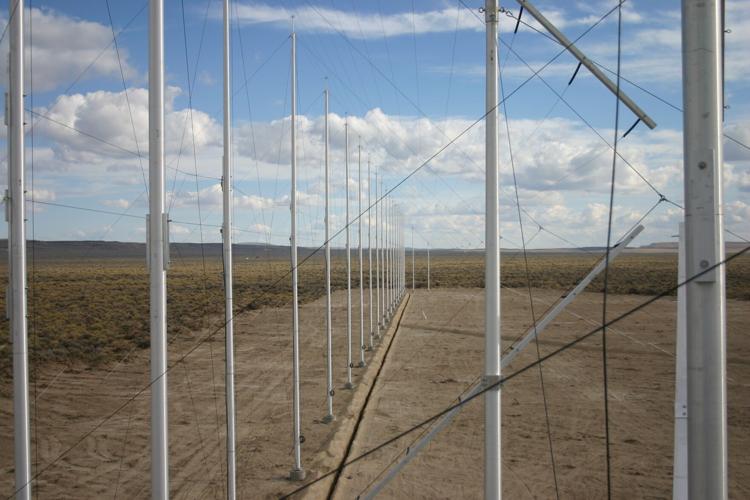When Simon Shepherd recently came home to River Falls, he was back to his roots. But most of the time, his mind is focused on phenomena that happen far above the clouds.
Professor Shepherd graduated from River Falls High School in 1985. He’s the son of John and Beverly Shepherd of River Falls.
His dad was a physics professor at UWRF. His mom was an academic computer specialist, also at UWRF.
According to Simon’s sister Sally, who graduated from River Falls High School in 1984, growing up in that household, there was a whole lot of science flowing through their blood.
And all that science propelled Simon into the ionosphere -- almost literally.
The 48-year-old Simon has a physics degree from Middlebury College in Vermont, a master’s degree in mechanical engineering from the University of Washington and his Ph.D in physics from Dartmouth College, where he now teaches math and computer science.
But it’s his research that has brought him international recognition.
In 2010 Simon and a team of colleagues and students built two huge radar units on 25 acres of flatland in Oregon.
The units send radio waves across Alaska and out into the ionosphere. From that Simon gathers important information about what happens in the ionosphere.
The setup is understandably gigantic.
The 64 aluminum poles stand 60 feet tall. The team used nearly five miles of low-loss coaxial cable, seven and a half miles of reflector wire, one mile of antenna wire, and six and a half miles of kevlar guy cable.
It took 1,150 person hours and 12 scientists from four institutions to build the units.
Simon said the data they get from the units is a little like the radar maps meteorologists use to illustrate what’s going on close to earth.
“Just like you look at those radar maps and see what’s happening, what storms are coming and from where,” Simon said, “it’s similar to what I do, but much higher up.”
In fact the ionosphere starts 60 miles above the earth. It’s the last layer of our atmosphere before outer space.
“The radio waves bounce off that layer, back and forth at that altitude,” Shepherd said. “That’s where I make my measurements. I try to make an image of what happens in that layer.”
The most visible events to us on earth that occurs in the ionosphere are the northern lights. They’re sometimes caused by storms on the sun.
The sun sends gusts of charged particles out into space. When they hit the Earth’s magnetic field, they create those shimmering, colorful patterns in the sky’s ionosphere.
Simon said many of the events in the ionosphere are created by the sun. And they can have effects on us.
“I was speaking to a second grade class,” Simon said, “and this second grade teacher questioned me. She basically asked, ‘Why the heck are you doing this and why does it matter to us?’ It’s a valid question.”
“Solar flares cause storms in the ionosphere. When there’s an explosion on the sun, a whole mass goes out at a greater velocity.
“And when it’s directed at the earth, it slams into the ionosphere and creates space weather.”
One of the biggest effects of space weather is messing up GPS signals.
“It’s one thing when we are driving along and our GPS signal quits. It’s a whole different story when it happens to an airplane.”
Many airplane routes often go up and over the polar region, where according to Simon, there’s a lot of radiation.
“They can lose their GPS during a storm in the ionosphere because the GPS signal has to pass through that on the way to the satellite. That’s why airlines still use radios to land the planes.
“Also when the ionosphere is very disrupted, it increases the radiation the pilots and crew are exposed to, which is really unhealthy. It’s like an x-ray.
It would be nice to predict this so the pilots could fly a different route.”
For the rest of the story, see the Aug. 27 print issue of the River Falls Journal.





(0) comments
Welcome to the discussion.
Log In
Thank you for taking part in our commenting section. We want this platform to be a safe and inclusive community where you can freely share ideas and opinions. Comments that are racist, hateful, sexist or attack others won’t be allowed. Just keep it clean. Do these things or you could be banned:
• Don’t name-call and attack other commenters. If you’d be in hot water for saying it in public, then don’t say it here.
• Don’t spam us.
• Don’t attack our journalists.
Let’s make this a platform that is educational, enjoyable and insightful.
Email questions to mthorud@orourkemediagroup.com.